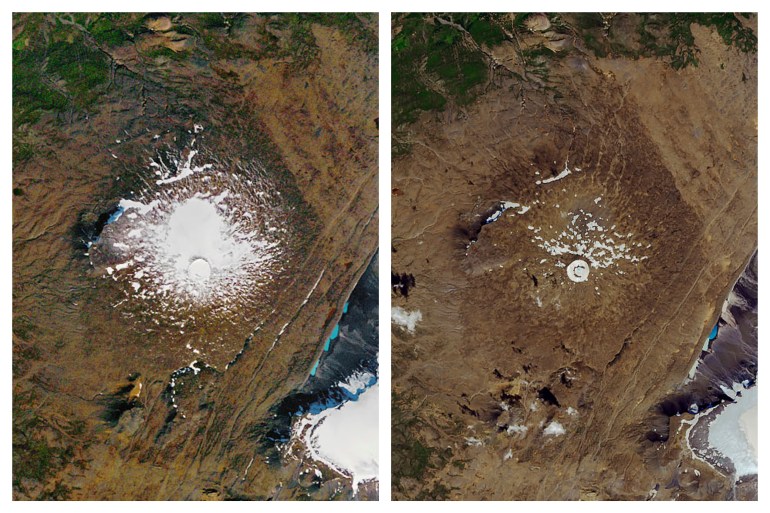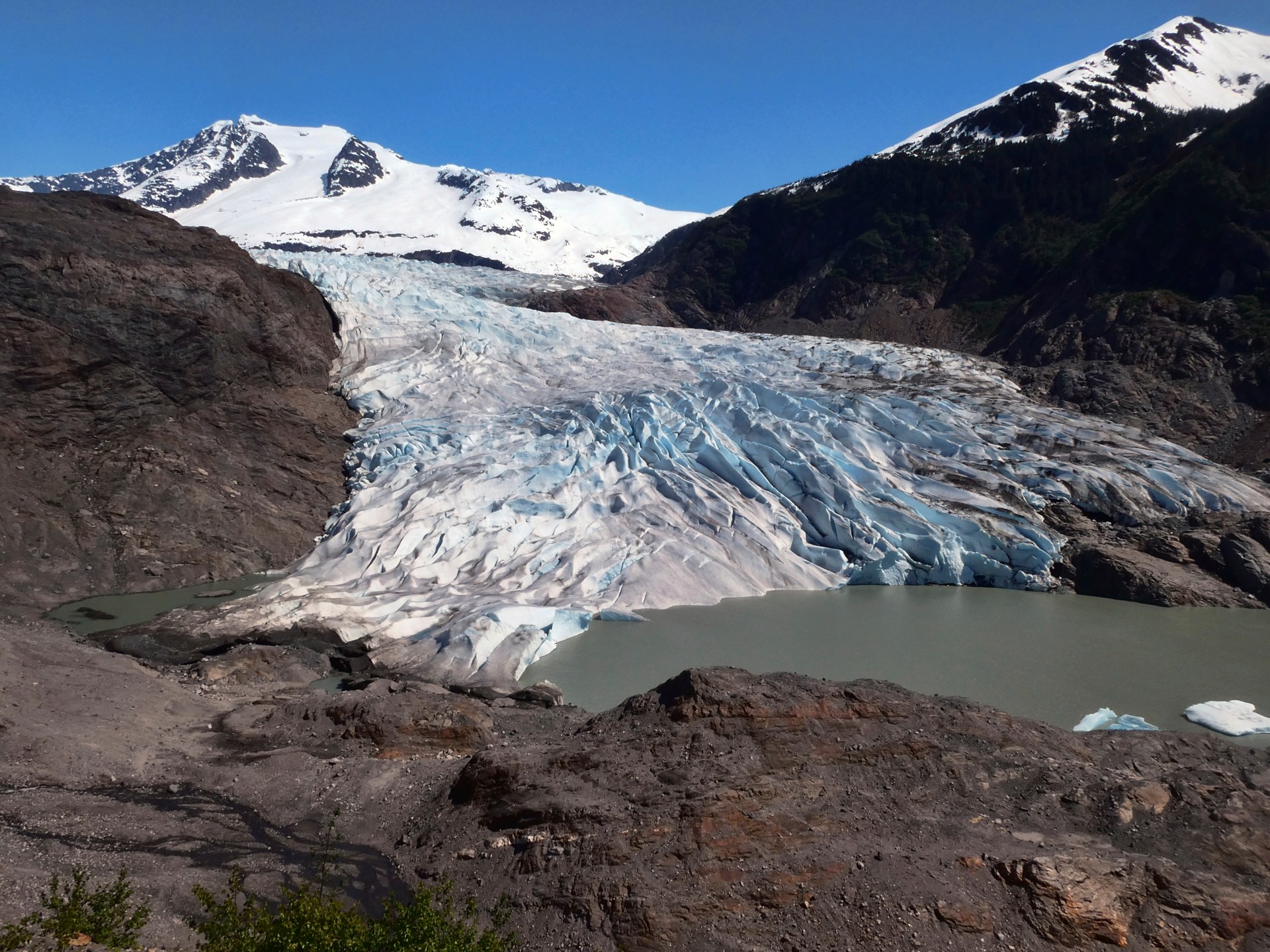Two-thirds of glaciers projected to disappear by 2100: Study
The world’s glaciers are shrinking and disappearing faster than scientists thought, with two-thirds of them projected to melt out of existence by the end of the century at current climate change trends, according to a new study.
But if the world can limit future warming to just a few more tenths of a degree and fulfil international goals – technically possible, but unlikely, according to many scientists – then slightly less than half the globe’s glaciers will disappear, the study concluded. Mostly small but well-known glaciers are marching towards extinction, its authors said.
In a worst-case scenario of several degrees of warming, 83 percent of the world’s glaciers would likely disappear by the year 2100, the researchers said.
The study published in the journal Science on Thursday examined all of the globe’s 215,000 land-based glaciers – not counting those on ice sheets in Greenland and Antarctica – in a more comprehensive way than past studies. Scientists then used computer simulations to calculate, using different levels of warming, how many glaciers would disappear, how many trillions of tonnes of ice would melt, and how much it would contribute to sea level rise.
The world is now on track for a 2.7-degree Celsius (4.9-degree Fahrenheit) temperature rise since pre-industrial times, which means, by the year 2100, losing 32 percent of the world’s glacier mass or 48.5 trillion metric tonnes of ice, as well as 68 percent of the glaciers disappearing.
That would increase sea level rise by 115 millimeters (4.5 inches) in addition to seas already getting larger from melting ice sheets and warmer water, said the study’s lead author David Rounce.
“No matter what, we’re going to lose a lot of the glaciers,” said Rounce, a glaciologist and engineering professor at Carnegie Mellon University. “But we have the ability to make a difference by limiting how many glaciers we lose.”
“For many small glaciers, it is too late,” said study co-author Regine Hock, a glaciologist at the University of Alaska Fairbanks and the University of Oslo in Norway. “However, globally our results clearly show that every degree of global temperature matters to keep as much ice as possible locked up in the glaciers.”
Projected ice loss by 2100 ranges from 38.7 trillion metric tonnes to 64.4 trillion tonnes, depending on how much the globe warms and how much coal, oil and gas is burned, according to the study.

More than projected
The study calculates that all that melting ice will raise the world’s sea level anywhere from 90mm (3.5 inches) in the best-case scenario to 166mm in the worst case, for an increase of four percent to 14 percent more than previous projections.
That 4.5 inches of sea level rise from glaciers would mean more than 10 million people around the world – and more than 100,000 people in the United States – would be living below the high tide line when they would otherwise would be above it, said sea level rise researcher Ben Strauss, CEO of Climate Central.
Twentieth-century sea level rise from climate change added about four inches to the surge from 2012 Superstorm Sandy. That alone cost about $8bn in damage, he said.
Scientists say future sea level rise will be driven more by melting ice sheets than glaciers.
But the loss of glaciers is about more than rising seas. It means shrinking water supplies for a big chunk of the world’s population, more risk from flood events, and losing historic ice-covered spots from Alaska to the Alps to the area near Mount Everest’s base camp, scientists told The Associated Press.
“For places like the Alps or Iceland … glaciers are part of what makes these landscapes so special,” said US National Snow and Ice Data Center Director Mark Serreze, who wasn’t part of the study but praised it. “As they lose their ice in a sense they also lose their soul.”
Hock pointed to Vernagtferner glacier in the Austrian Alps, which is one of the best-studied glaciers in the world, but said that glacier “will be gone”.




